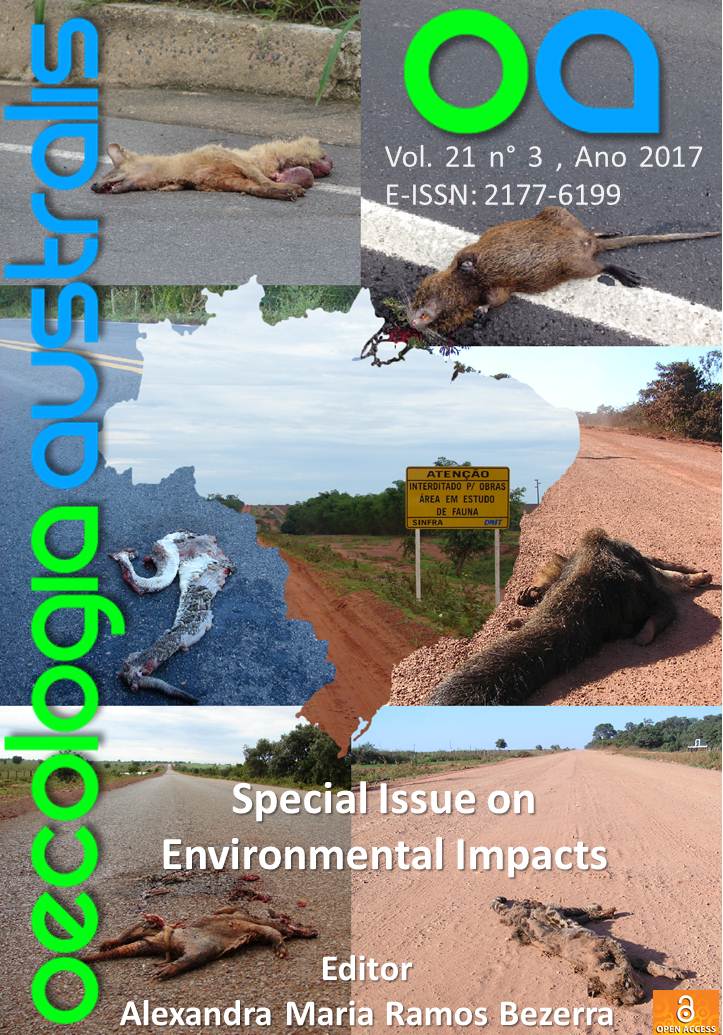ROAD AND LANDSCAPE FEATURES THAT AFFECT BAT ROADKILLS IN SOUTHEASTERN BRAZIL
DOI:
https://doi.org/10.4257/oeco.2017.2103.09Keywords:
Atlantic Forest, BR-101/RJ Norte, Chiroptera, conservation, Road EcologyAbstract
The most studied impact on road ecology is roadkill, however, there is little information about the relations between highways and specific groups like bats. This study intended to identify the species of bats roadkilled and to evaluate the existence of temporal fluctuation between the roadkill rates, specific stretches of the road with higher rates, and characteristics of the road/landscape that may influence those rates. We encountered at least nine bat species among 65 roadkills (most Phyllostomidae), which comprise a subgroup of the local fauna that presents ecologic features that make them susceptible to being hit, especially Artibeus lituratus. The medium roadkill rate was of 0.01 individuals/km/day of monitoring, and there was no significant temporal variation. We identified five hotspots through special 2D HotSpot Identification Analysis. The selection of theoretical models through Generalized Linear Models showed that roadkill occurrence has a positive relation with vehicular traffic and negative relation with presence of marginal pasture and forests. As the major part of records was of species that are tolerant to human-disturbances, the increase in traffic consequently affected a higher number of bats capable to explore the area occupied by the road. The presence of native forest close to the road can lead to a decrease of animals hit by vehicles, once it offers more resources and favorable habitats, which reduces the need for bats to cross the roads for foraging. On the other hand, many species that necessarily depend on areas sheltered by trees for shelter, and do not possess the ability to fly long distances do not occur in open areas such as pastures. In this context, we suggest that the main measure of mitigation regard bat species would be the traffic control through speed limit, especially on the roadkill hotspots areas.
Downloads
Downloads
Additional Files
- Cover Letter
- Figure1
- Figure2. Cumulative curve of bat richness along sampling days in BR-101/RJ Norte road. Bars represent the confidence interval of 95%.
- Figure3. Temporal variation of bats roadkill rate on BR-101/RJ Norte road.
- Figure4. The result of 2D Hotspot Identification (50 meters scale and 95% confidence limit) that takes into account all records of roadkill bats between May 2013 and January 2016 on BR-101/RJ Norte road between km 190 and 261 (0-71). Y-axis sho


